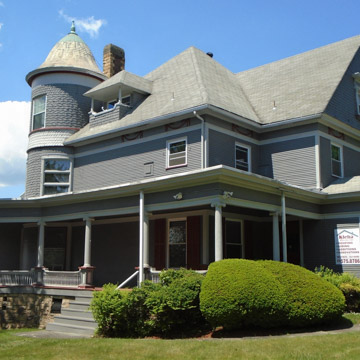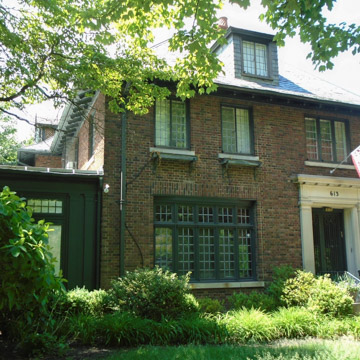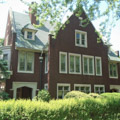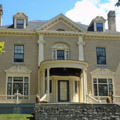This block gives a good sense of the development of the Hill as an early-twentieth-century elite neighborhood. The corner is anchored by the frame Victorian Nicholas Rice house at 601 Webster Avenue (1898, Fred J. Amsden). The Flemish-gabled brick house at 607 Webster was built by Scranton architect John A. Duckworth in 1911 as his own home. Next door at 611 Webster Avenue, the A. H. Kramer house (1914, Edward Langley) is of dark brick with steep gables and a green slate roof, while the hipped-roof Martin Linder house (1932) at 613 Webster is a late work by Edward H.
You are here
600 Block of North Webster Avenue
c. 1898–c. 1920. N. Webster Ave. between Olive and Pine sts.
If SAH Archipedia has been useful to you, please consider supporting it.
SAH Archipedia tells the story of the United States through its buildings, landscapes, and cities. This freely available resource empowers the public with authoritative knowledge that deepens their understanding and appreciation of the built environment. But the Society of Architectural Historians, which created SAH Archipedia with University of Virginia Press, needs your support to maintain the high-caliber research, writing, photography, cartography, editing, design, and programming that make SAH Archipedia a trusted online resource available to all who value the history of place, heritage tourism, and learning.


















